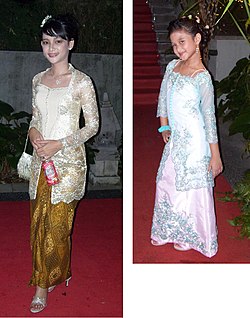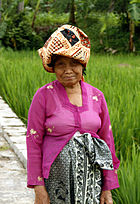


Aceh is a diverse region occupied by several ethnic and language groups. The major ethnic groups are the Acehnese (who are distributed throughout Aceh), Gayo (in central and eastern part), Alas (in southeastern), Tamiang (in Aceh Tamiang), Aneuk Jamee (concentrated in southern and southwestern), Kluet (in South Aceh), and Simeulue (on Simeulue Island). There is also a significant population of Chinese, who are influential in the business and financial communities.
The Acehnese language is widely spoken within the Acehnese population. This is a member of the Aceh-Chamic group of languages, whose other representatives are mostly found in Vietnam and Cambodia, and is also closely related to the Malay group of languages. Achenese has many words borrowed from Malay and Arabic and traditionally was written using Arabic script. Acehnese is also used as local language in Langkat and Asahan (North Sumatra), and Kedah (Malaysia), and once dominated Penang. Alas and Kluet are closely related languages within the Batak group. The Jamee language originated from Minang language in West Sumatra, with just a few variation and differences.
Aceh was once a meeting point for people from many nations, and among the present day Acehnese can be found some individuals of Arab, Turkish, and Indian descent. Before the tsunami, the region of Meureuhom Daya (Lamno) used to have an unusually high number of people with fair complexions, blue eyes and blond hair, and local traditions attributed to Turkish or Portuguese ancestry


 The wonderful and mystical sound of Javanese music gamelan instruments accompanies a traditional sacred Panggih or Temu (means meeting) between a beautifully make up bride with her handsome bridegroom in front of a house decorated with "Tarub" plant decoration. The bride with traditionally make up with special gelungan (hairdo), wearing shining brilliant and golden jewelries and special dress for this occasion.
The wonderful and mystical sound of Javanese music gamelan instruments accompanies a traditional sacred Panggih or Temu (means meeting) between a beautifully make up bride with her handsome bridegroom in front of a house decorated with "Tarub" plant decoration. The bride with traditionally make up with special gelungan (hairdo), wearing shining brilliant and golden jewelries and special dress for this occasion.


